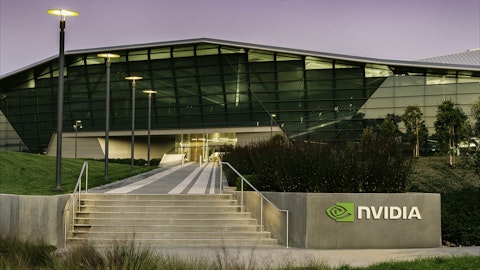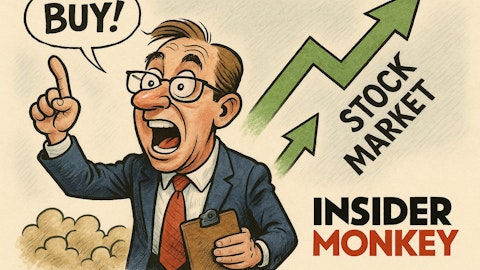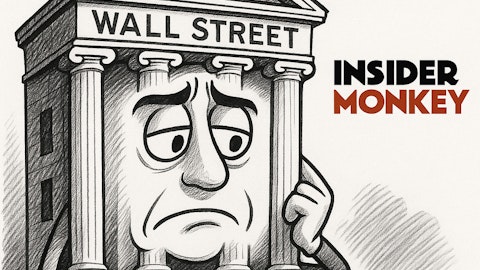On Thursday’s episode of Mad Money, Jim Cramer took a look at President Donald Trump’s unwavering stance on tariffs and expressed concern about the broader economic and constitutional implications.
“Now it didn’t even seem to matter to the president that the US Court of International Trade thought that he exceeded the checks and balances protected by the institution and the constitution.”
READ ALSO: 8 Stocks on Jim Cramer’s Radar and Jim Cramer Put These 14 Stocks Under the Microscope.
Cramer pointed out that while tariffs might bring in a substantial amount of money, potentially even hundreds of billions of dollars, the reality is that even the most optimistic projections fall short of making a meaningful dent in the massive budget deficit. He referenced the president’s ambitious budget proposal and said that even doubling revenue from tariffs would not come close to covering what he called a potential $3 trillion shortfall. He added:
“When we saw this huge burst of futures buying and then a barrage of selling after the president made it clear that the ruling meant nothing to him, well, it got me to think, who really wants these tariffs?”
As most recent retail earnings have been announced, Cramer argued that it is clear consumers are feeling the impact. He noted that prices are rising and stressed that it is not a theoretical concern anymore, as businesses are not absorbing the cost of tariffs. Instead, almost all of them are passing those costs on to the consumer. “So as a consumer,” he said, “you have to be rooting against tariffs.”
Cramer likened the current environment to a ticking clock. The timing and execution of the tariff strategy, in Cramer’s view, have contributed to volatility and uncertainty. He mentioned that if the policy had been rolled out with more foresight and planning, markets would not have reacted so erratically to a temporary halt. He questioned whether it is too late to change direction, but still held onto some hope that there is time to adjust course.
“My hope is that the tariffs can still be laid out in a way that creates jobs, raises some money for the treasury, gives companies enough heads up to mitigate the damage. Wasn’t that the plan? Is there anyone, perhaps even including the president, who believes that’s what we’re currently doing right now?”

Our Methodology
For this article, we compiled a list of 65 stocks that Cramer commented on during episodes of Mad Money aired between April 24 and May 2. We narrowed the list to 10 stocks that were most favored by analysts. We listed the stocks in ascending order of their average analyst price target upside as of May 30. We also mentioned the hedge fund sentiment around each stock, which was taken from Insider Monkey’s Q1 database of 1,000 hedge funds.
Why are we interested in the stocks that hedge funds pile into? The reason is simple: our research has shown that we can outperform the market by imitating the top stock picks of the best hedge funds. Our quarterly newsletter’s strategy selects 14 small-cap and large-cap stocks every quarter and has returned 373.4% since May 2014, beating its benchmark by 218 percentage points (see more details here).
10 Stocks on Jim Cramer and Wall Street’s Radar
10. Capital One Financial Corporation (NYSE:COF)
Number of Hedge Fund Holders: 93
Average Price Target Upside: 18.95%
During April 24’s episode of Squawk on the Street, Cramer made the following comment about Capital One Financial Corporation (NYSE:COF):
“We own Capital One. Now I don’t know… people… in your world, this Capital One, it got approved, and, and, Fairbank is gonna stand there after this thing closes, and I think he’s gonna buy back a ton of stock because his stock is really cheap and he’s a reaallyy good banker […] Capital One, they’re supposed to be missing the quarter, people are supposed to be defaulting. It is the oddest time, it’s the strangest angst, David, I see people having angst and doing crazy things. They have angst, and they’re paying off their credit. You know when you have angst, you default.”
Capital One Financial Corporation (NYSE:COF) provides a broad range of financial services, including banking, lending, and credit products. The company offers checking and savings accounts, various types of loans, and digital banking services to individuals, small businesses, and commercial clients.
On May 21, BofA analyst Mihir Bhatia increased the price target for Capital One (NYSE:COF) to $233 from $223 and maintained a Buy rating after the recent acquisition of Discover Financial. The analyst highlighted that the closed-loop Discover network provides significant strategic opportunities that could strengthen Capital One’s deposit, banking, and card businesses. The firm noted that credit metrics are improving and expects expense synergies to be easily attainable.
9. UnitedHealth Group Incorporated (NYSE:UNH)
Number of Hedge Fund Holders: 139
Average Price Target Upside: 21.31%
Nearly a month ago, a caller inquired about UnitedHealth Group Incorporated (NYSE:UNH), and here is what the Mad Money host had to say:
“Okay, it’s going to be under pressure for some time because a lot of companies really, a lot of big pension funds and mutual fund managers, thought everything was perfect. But I am going to say today at $400, I would indeed start a position. I have been very negative on UnitedHealth from 630 down to this caller right here. I would start a position at 400 bucks. That’s a big change for me.”
UnitedHealth (NYSE:UNH) offers a wide range of healthcare services, including insurance, pharmacy benefits, care delivery, and health technology solutions. The company’s operations support individuals, employers, and government programs through medical, pharmaceutical, and digital services.
On May 21, HSBC analyst Sidharth Sahoo downgraded UnitedHealth (NYSE:UNH) to Reduce from Hold and lowered the price target to $270 from $490. The firm noted that the stock has lost half its value since Q1 after a CEO transition, the withdrawal of 2025 guidance, and Medicare fraud claims. HSBC sees pressure on earnings and ongoing policy uncertainty. The firm thinks that downside risks now outweigh the rewards and that more earnings revisions may follow.





